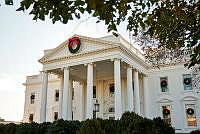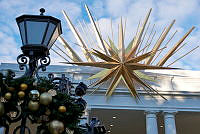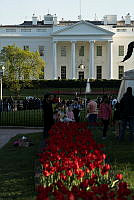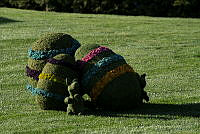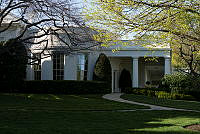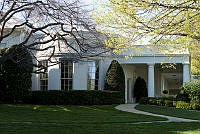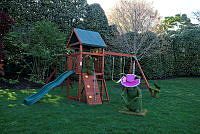2024 North Portico Holiday Decorations, Biden Administration
This photograph of the North Portico decorations was taken by David Wiegold on December 2, 2024 during a press preview of the White House holiday decorations. President Joseph R. Biden and First Lady Dr. Jill Biden selected "A Season of Peace and Light" as the 2024 holiday theme. For President and Dr. Biden’s final winter holiday season at the White House, the décor was inspired by the spirit of goodwill and gratitude and the festive opening of the doors to the President’s House. A large wreath was placed atop the pediment of the North Portico—an addition to the exterior holiday decorations that Dr. Biden oversaw for the first time in 2021—alongside smaller wreaths in the windows.
